2016 Scott Genius LT 710
(discontinued)
| Where To Buy | |||
|---|---|---|---|
Free Delivery on purchases over £20.
|
|||
Free shipping on orders over $50 (continental U.S. only).
International shipping available. Some exclusions apply. |
|||
Free shipping on orders over $50 (continental U.S. only).
International shipping available. Some exclusions apply. |
|||
Reviewed by Steve Wentz and Brandon Turman // Photos by Lear Miller
Scott's Genius LT received a major overhaul in 2014, and while the 2016 model doesn't look all that different from recent years, the company's continued focus on refinement could help improve the overall ride. Previous Genius LT bikes have had their pros and cons, with suspension that didn't quite agree with us and some questionable component choices. The latest version makes use of FOX's most up to date rear shock technology and custom tuned 36 fork, which much more closely align with how a 170mm (6.7-inch) travel bike can be ridden. Will a slight evolution of the older design make this ride shine? We put the Genius LT 710 to the test on Phoenix's tough trails during the 2016 Vital MTB Test Sessions.

Highlights
- Carbon frame with aluminum chainstays and seatstays
- 27.5 (650b) wheels
- 170mm (6.7-inches) of rear wheel travel with 110mm (4.3-inch) pedal mode // 170mm (6.7-inches) fork travel
- Three position TwinLoc suspension remote
- Custom FOX Nude DPS EVOL shock
- Adjustable geometry via flip chip
- Tapered headtube
- Internal cable routing
- 180mm post mount rear brake
- Optional direct front derailleur mount
- Press fit 92 bottom bracket with provisions for ISCG05 mount
- Interchangeable dropouts with 12x142mm rear axle
- Measured weight (size medium, no pedals): 29.3-pounds (13.3kg)
- MSRP $5,300 USD
The most unique aspect of Scott's Genius LT is the adjustable suspension system. With a flick of the TwinLoc lever the bike can go from a wide open 170mm of travel to a more climb friendly 110mm (4.3-inches) in the rear. The 170mm FOX 36 Float Performance FIT4 fork remains fully active in both of these modes to aid in traction and bump absorption. Another flick of the lever locks out both the front and rear suspension, allowing the rider to have zero influence on the suspension for extended road climbs. Quickly tap the reset lever and you're back in the longest travel setting and ready to rally descents.

In a world where most bike manufacturers are focusing on compression adjustments, Scott's focus on travel and the resulting geometry changes may make a lot of sense. After all, uphill riding is best suited to different geometry than downhill riding. The Genius LT's different travel numbers result in different sag points on the proprietary 215x63mm (8.5x2.5-inch) FOX Nude DPS EVOL air shock, making the middle 110mm "Traction" mode better for climbing by raising the bottom bracket height a hair while steepening the head tube and seat tube angles.
Scott custom tunes the positive air volume on each rear shock depending on the size of the bike, and the two useable travel modes have different damper settings. The shock is tucked up against the top tube, leaving ample room for a water bottle in the main frame. There are six sealed bearings and two IGUS bushings used in the pivots.

Looking at the Genius LT 710 from the side, it's hard not to like the new graphics, and the lines flow well from front to back. Get on the bike, however, and it looks like a bit more of a jumbled mess. There are four cables coming from the left side of the bar and two from the right. That's a few more cables than we'd usually like, and their neon orange color might play a role in the extra cables being slightly obscene. Luckily things clean up a bit as the cables going to the shock, rear derailleur, seatpost, and rear brake dive into the headtube. The use of a few clamps hold the cables securely inside the frame, keeping the cables rattle free on trail.
The rear end features 12x142mm axle spacing, but can be changed to 12x135mm or 135mm QR spacing with the interchangeable IDS-SL dropout system. When this feature was first introduced a few years ago it made sense, but going into 2016 we're seeing more and more bikes with the new Boost 148mm standard, leaving the Genius LT a little behind the times.
Additional features include a press fit bottom bracket, optional direct front derailleur mount, optional dangler-style lower chainguide on the chainstay, and a chain blocker to prevent frame damage should the chain fall off the inside. The bike requires the use of a custom adapter if you'd like to mount a guide using the ISCG05 standard, but it can be done. There's about 13mm (0.5-inches) of room for mud clearance with the stock 2.35-inch Schwalbe rear tire. Scott protects the front triangle with a downtube guard, though chainstay and seatstay guards are nowhere to be found.(UPDATE: We received word that the Scott Genius LT line does include chainstay protection, but was missing from our test sample.)
There are three Genius LT models available in the US: the 700 Tuned (full carbon), 710 (half carbon, half aluminum), and 720 (aluminum). The bike also comes in three plus size versions, which you can learn about in our Genius LT Plus launch feature. We tested the $5,300 USD Genius LT 710.
Geometry

The bike's geometry is a fairly standard play on the modern all-mountain bike with a 66.3-degree head tube angle. It's adjustable to 66.8-degrees, but with such a small adjustment range we don't feel many people will be swapping back and forth. Set and forget is a good thing in our minds, and Scott's flip chip allows for that small personal preference adjustment. We measured the bottom bracket height at 337mm (13.3-inches) in the low setting (a good deal lower than claimed), and it too can be raised by 7mm (0.28-inches) with the flip chip. Scott's house component brand, Syncros, makes headset cups that can be used to slack the bike out more if you prefer.
Other notable numbers include just above average length 440mm (17.3-inch) chainstays and reasonable reach measurements across the size range. The reach maxes out at 446mm (17.6-inches) on the large, which may leave riders over about 6'2" (1.88m) searching for a bigger ride.
On The Trail
We have been big fans of Scott's fit in the past few years. They provide short stems, wide bars that can be cut to a rider's preference, and components that generally work well together. This year's Genius LT 710 is no different. The Syncros stem's 50mm length and bar's 760mm (29.9-inch) width suited us just fine on our size medium bike, though larger sizes (and their riders) might be best suited with something in the 800mm (31.5-inch) realm. At first pedal, the fit felt roomy for a medium frame coupled with a short stem. Unfortunately the single 5mm spacer under the stem doesn't give much adjustment if a rider wants to play with bar height. For a 170mm travel bike with a low 10mm rise bar, we'd definitely prefer to be able to raise the bar some if we headed to a bike park or really steep terrain. It has the travel and the geometry, but lacks a long enough steerer tube for added adjustability.(UPDATE: Our test sample had the steerer tube cut short for display purposes, while what you can buy at dealers has more adjustability.)
We set the bike to Scott's recommended 30% sag point (~18mm) in the rear, set the fork to FOX's air pressure recommendation for our weight, and the resulting balanced feeling "parking lot" setup was ready to go with little tweaking required.
With many unanswered questions waiting for us, we hopped on South Mountain's National, Mormon, Holbert, Geronimo and other trails to get a real sense of what the latest Genius LT is made of. The trails had a mix of gentle grades, aggressively steep climbs, and really rough descents. We felt like it was a perfect mix for the Genius LT with its dual Jekyll and Hyde personality. When pointed downhill the 170mm of travel screams "go for it," so we did just that over chunder, drops, and lines that we looked back on and felt like we got away with something.

The Genius LT would motor up most sections of trail regardless of grade, though much of the bike's uphill proficiency is attributed to the adjustable travel. While climbing we would more often than not turn to the middle 110mm traction control setting, as it's just an okay pedaler in the longer travel mode. With only a small amount of sag in the rear, and standard sag on the front, climbing a relatively long travel bike became as fun as it could. It effectively picks you up by providing a steeper set angle, higher sagged bottom bracket height, and firmer suspension feel. As with many single pivot bikes, there is a little bob. The feeling is more pronounced in easier gears, but it's never bad. Aside from sprinting, when going up consistent grades the Genius LT seems to fight above its weight class, motoring over rocks and obstacles with ease thanks to a tall feeling and a bottom bracket that stays high off the ground.
We found ourselves quickly swapping to descent mode when the trail would point downhill, even momentarily, as the same good feeling of the middle traction control setting while going uphill would translate to feeling really front heavy while going downhill. With other suspension systems a 'mid' or 'trail' setting would simply increase compression damping, but on the Scott the change in travel resulted in a front end that would feel like it was diving, even if it wasn't using full travel. We would quickly put the bike back to 'descend' mode and let the rear end sag the proper amount, which gave us a better sense of balance.
While cruising, whether on smooth trails or on some rougher terrain, the Genius LT was a fun bike to ride. It felt lively but planted. It was an odd combination that we can only attribute to multiple inches of sag and the ability to have the right geometry at the right time. While the linkage creates a regressive-linear leverage curve, when you add in the custom tuned rear shock with a large volume spacer, the bike's suspension felt as though it had decent support in most situations. This was a welcome change to the feeling of really wallowing through the travel on previous model years, though the issue is now somewhat masked by a better rear shock and tune.
Our biggest surprise and disappointment came when we really started to push the Genius LT to its limit. When going fast and hitting numerous rough sections we couldn't help but feel like the bike was tough to control. Was this the geometry? Was it the suspension? It was both, and it's the achilles heel of Scott's design. Because of the adjustable suspension travel, the geometry can be great for climbing. But because of the adjustable suspension travel, you lose the ability to easily tune the rear shock for speed; there's no rear compression adjustment.

Numerous times we felt the front end diving into its travel and pulling the bars away from us. However, after every ride we would check the o-ring travel usage indicator and find that we hadn't used full travel. There is a low-speed compression adjuster for the fork, but with this tuned in for a firmer ride we felt off the back when the rear end would go through travel easier than the front. This made it really tough to achieve a sense of balance at speed.
Coupled with a tall ride height, we had a little bit of trouble on corners due to a disconnected feel. If you really push, there's a lack of consistency in the rear suspension that prevents you from always knowing what's coming next. There's a similar feel while pressing into big jump lips. In search of balance we resorted to less compression on the front and a slightly springier ride that rewarded an off the back riding style as we'd monster truck over the trail. That technique worked really well, though it can make for some tough line changes.
It has been a few years since we tried a Genius LT, and while we don't think it's perfect, we can't help but commend Scott for some massive improvements. On previous generations small bump sensitivity was severely lacking, and the new fork and rear shock allow the Genius LT to hold onto choppy, off camber terrain that would send many other bikes skidding to the sidelines. It's this type of terrain where the bike shines. Some of that is the sheer travel and how quickly it uses it, and some of that is the vastly improved suppleness of the initial stroke thanks to the EVOL air can. That supple rear suspension also aided in the bike's braking, keeping the rear end in contact with the ground very well. Watch the suspension in action in this video:
Frame stiffness was good, too. We love how solid it is, and how that translates into forward momentum when we really get on the gas. How many bikes have this much travel AND feel snappy? Not many. The Genius LT feels lighter than you'd expect, it has good rolling speed, and can now pump decently well considering its extensive travel.
Build Kit
The Scott Genius LT 710 comes with a variety of capable parts that help further the bike's capabilities, and out of the box it truly is ready to go thanks to items like a nicely sized cockpit, 150mm RockShox Reverb Stealth dropper, Schwalbe rubber, Shimano disc brakes, and a SRAM 1X drivetrain. The kicker here is the price, as many full carbon frames can be built up as a complete bikes for $5,300 USD, which really opens the door to competition. The parts - a mix of Shimano SLX, SRAM GX1, and house brand Syncros components - represent some of the lowest end spec among comparably priced bikes in our 17 bike Test Sessions fleet. That said, everything worked well aside from a front brake that never seemed to bed in properly.
In addition to larger stanchions, the FOX 36 Float Performance Elite FIT4 fork featured a welcomed low-speed compression adjustment that the bike lacked a couple of years ago. Even without Kashima coating, the 36 was smooth, ramped up well, and had good stiffness to match the rear of the frame. We also can't overlook how much the FOX rear shock has improved, and the increased small bump sensitivity does wonders for this bike. The suspension seemed to stick the tires to the driest of terrain without a problem.
Speaking of the tires, Schwalbe's Nobby Nic EVO tires in the 2.35-inch width were a good choice for the Genius LT. They rolled fairly fast for a big, full tread tire, and remained consistent for the duration or our rides. Faced with the opportunity to motor up steep sections we never failed due to a lack of traction. The Nobby Nic's tread design did seem to start to slide earlier than most tires, but the tradeoff was lots of control and ease of recovery. With the long legs and springy suspension feel of the Genius LT, we were happy to have predictable tires that aided our confidence. Scott specs a longer wearing PaceStar compound tire out back for improved durability.

The 32-hole Syncros X-23 hoops never stood out to us as an awesome component, but they also never let us down. The butted DT Swiss Competition spokes remained snug, engagement of the Syncros hubs was decent, and they held up really well to our punishment. They did not come tubeless, but do have good rim strips which allowed us to easily swap over to tubeless after the first few rides. Inner rim width was average in the mid 20mm range, but we liked the way the rim held the tire and gave it a rounded profile.
We've grown to really trust Shimano disk brakes over the years, but we can't help but think we got the short end of the stick with our set. The SLX M675 brakes on our bike had good feel, but the front never seemed to fully bed in to the rotor. Through multiple descents, parking lot start/stops, and numerous adjustments, we just couldn't get the front to bite into the 203mm rotor enough. This is of course a small issue, and a fluke in our mind, but regardless we couldn't come into sections as fast as we wanted to because we could never get full stopping power out of the front.
SRAM's GX1 component group performed its drivetrain duties flawlessly. Weight is slightly more than the higher end groups, but we are still impressed by GX1's ability to hold a chain, bang out shifts in tough situations, and keep things quiet. Well, almost quiet. The lack of chainstay or seatstay protection made the bike sound like a bucket of bolts on rougher parts of the trail. That one distraction aside, we never dropped a chain, we had no mechanicals and we don't blame the noise on any parts other than a chainstay guard oversight.(UPDATE: We received word that the Scott Genius LT line does include chainstay protection, but was missing from our test sample.)
Long Term Durability
The wheels are robust, the fork is tried and true, and the drivetrain was perfect. Aside from the lack of bite from the front brake, most other parts of the bike are up to personal preference. We see no reason to worry about long term durability because of the parts spec. The only cause for concern is the adjustable travel system. If the suspension needs work, it's possible that the Genius LT will require more than the local shop for service. Sending in proprietary suspension parts for service is never fun, so we would see this as the only long term downside.
There is an extensive user manual available detailing service procedures for all the key components, and torque specs are printed on the pivot hardware for easy reference. Be sure to keep an eye on the two IGUS bushings for signs of wear.
Scott backs the bike with a five year warranty for the frame and swingarm, but owners must have yearly service performed by an authorized Scott dealer or risk getting their warranty reduced to three years.

What's The Bottom Line?
With the introduction of some new products from FOX, Scott has made a big jump up in performance compared to the Genius LT from previous years. Off the top traction is vastly improved, most of the wallow is gone, the front end pairs well in the stiffness category, and you can now adjust the fork's compression damping. Combined with a stiff and light frame the bike is capable of taming quite a bit of terrain, and the TwinLoc travel adjustment system helps it tackle steep climbs far better than a long travel bike should.
However, while the bike has indeed improved thanks to the use of better suspension components, nearly every other bike on the market has as well, and we feel as though it still doesn't descend with the surefooted confidence you'd expect from a ride with 170mm of travel. The suspension is still a bit finicky due to frame kinematics, and for $5,300 there are much better spec'd bikes with arguably better designs. As tested, the person who will enjoy the Genius LT 710 the most is someone who prioritizes the climbs and still wants to have some mid-paced fun on the descents.
Visit www.scott-sports.com for more details.
Vital MTB Rating
- Climbing: 4 stars - Excellent
- Descending: 2.5 stars - OK
- Fun Factor: 3 stars - Good
- Value: 2 stars - Mediocre
- Overall Impression: 3 stars - Good
Bonus Gallery: 17 photos of the 2016 Scott Genius LT 710 up close and in action
About The Reviewers
Steve Wentz - Age: 31 // Years Riding MTB: 20 // Height: 5'8" (1.73m) // Weight: 180-pounds (81.6kg)
"Despite what it looks like, I'm really precise and calculated, which I'm trying to get away from. I'm trying to drop my heels more and just let it go." Steve is able to set up a bike close to perfectly within minutes, ride at close to 100% on new trails and replicate what he did that first time over and over. He's been racing Pro DH for 13+ years including World Cups, routinely tests out prototype products, and can squish a bike harder than anyone else we know. Today he builds some of the best trails in the world.
Brandon Turman - Age: 29 // Years Riding MTB: 15 // Height: 5'10" (1.78m) // Weight: 175-pounds (79.4kg)
"I like to have fun, pop off the bonus lines on the sides of the trail, get aggressive when I feel in tune with a bike, and really mash on the pedals and open it up when pointed downhill." Formerly a Mechanical Engineer and Pro downhill racer, Brandon brings a unique perspective to the testing game as Vital MTB's resident product guy. He has on-trail familiarity with nearly every new innovation in our sport from the past 5-6 years and a really good feel for what’s what.

About Test Sessions
Four years ago Vital MTB set out to bring you the most honest, unbiased reviews you'll find anywhere. That tradition continues today as we ride 2016's most exciting trail, all-mountain, and enduro bikes in Phoenix, Arizona. Reviews can be accessed 24/7 in our Product Guide. Test Sessions was made possible with the help of Rage Cycles. Tester gear provided by Troy Lee Designs, Royal Racing, Smith, Fox Racing, Race Face, Easton, and Source.
Specifications
Rear: Syncros CT148, RWS Axle, XD, Made by Formula
Rear: Schwalbe Nobby Nic EVO, 2.35"x27.5", PaceStar, 67 EPI, Kevlar, Snake Skin
| Where To Buy | |||
|---|---|---|---|
Free Delivery on purchases over £20.
|
|||
Free shipping on orders over $50 (continental U.S. only).
International shipping available. Some exclusions apply. |
|||
Free shipping on orders over $50 (continental U.S. only).
International shipping available. Some exclusions apply. |
|||








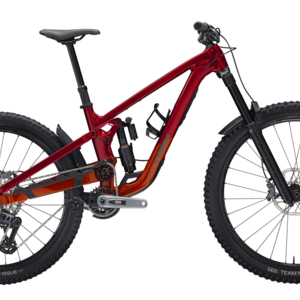
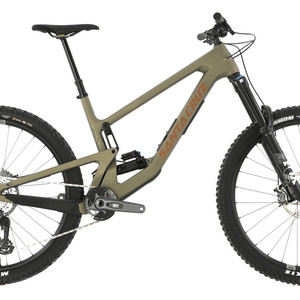
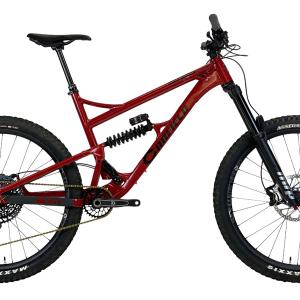
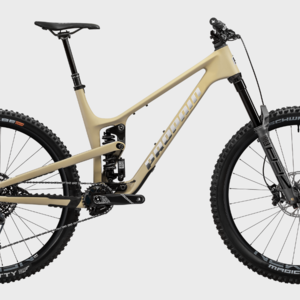

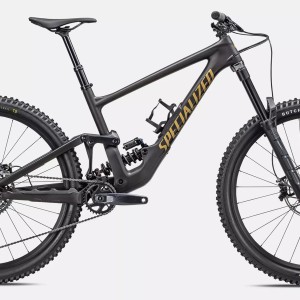
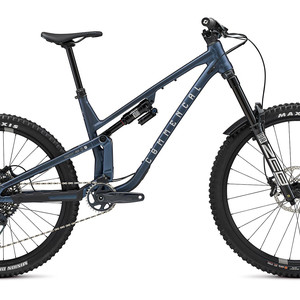






5 comments
Post a reply to: 2016 Test Sessions: Scott Genius LT 710